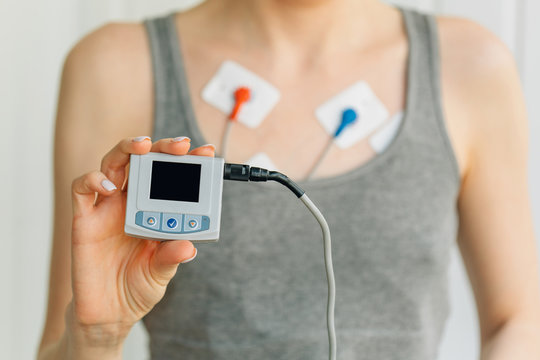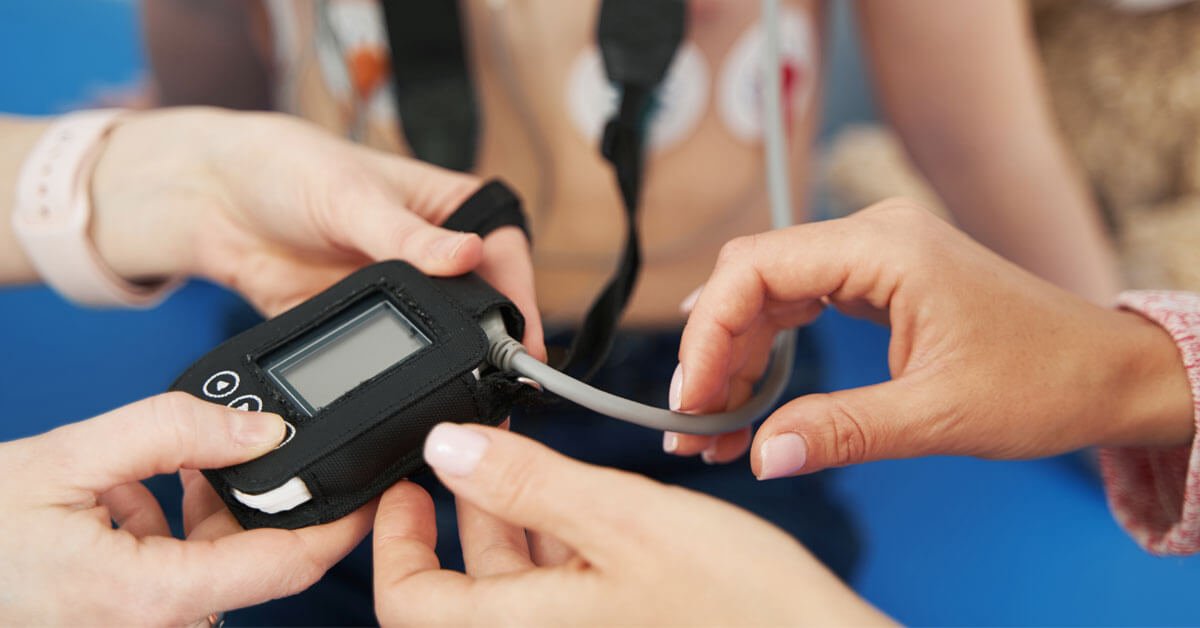Holter Monitoring
What Is Holter Monitoring?
A Holter monitor is a battery-operated portable device that measures and records your heart’s activity (ECG) continuously for 24 to 48 hours or longer depending on the type of monitoring used. The device is the size of a small camera. It has wires with silver dollar-sized electrodes that attach to your skin.

When Would You Need To Do Holter Monitoring?

To evaluate chest pain that can't be reproduced with exercise testing
To evaluate other signs and symptoms that may be heart-related, such as tiredness, shortness of breath, dizziness, or fainting
To identify irregular heartbeats or palpitations
To assess risk for future heart-related events in certain conditions, such as hypertrophic cardiomyopathy, after a heart attack that caused weakness of the left side of the heart, or Wolff-Parkinson-White syndrome.
To see how well a pacemaker is working
To determine how well treatment for complex arrhythmias is working
What Should You Expect During Holter Monitoring?

A Holter monitor recording is generally done on an outpatient basis. Procedures may vary depending on your condition and your healthcare providers practice.
- You will be asked to remove any jewellery or other objects that may interfere with the reading.
- You will be asked to remove your clothing from the waist up so that electrodes can be attached to your chest. The technician will ensure your privacy by covering you with a sheet or gown and exposing only the necessary skin.
- The areas where the electrodes patches are placed are cleaned, and in some cases, hair may be shaved or clipped so that the electrodes will stick closely to the skin.
- Electrodes will be attached to your chest and abdomen. The Holter monitor will be connected to the electrodes with wires. The small monitor box may be worn over your shoulder like a shoulder bag, around your waist, or it may clip to a belt or pocket.
- Be sure you know how to do it and have extra batteries on hand.
- Once you have been hooked up to the monitor and given instructions, you can return to your usual activities, such as work, household chores, and exercise, unless your healthcare provider tells you otherwise. This will allow your healthcare provider to identify problems that may only occur with certain activities.
- You will be instructed to keep a record of your activities while wearing the monitor. Write down the date and time of your activities, particularly if any symptoms, such as dizziness, palpitations, chest pain, or other previously experienced symptoms, occur.

How Can You Prepare For Holter Monitoring?
- You will be explained the procedure in detail.
- No fasting is required.
- Based on your medical condition, your healthcare provider may request other specific preparation.
By When Can You Expect Your Reports?
The time it takes to receive the results of your Holter monitoring can vary depending on the specific healthcare facility or provider conducting the test and their internal processes. However, in many cases, you can typically expect to receive the results within a few days to a week after returning the Holter monitor.
Frequently Asked Questions
Can I go about my daily activities while wearing a Holter monitor?
Yes, you are encouraged to continue your regular activities, including work, exercise, and sleeping, while wearing the Holter monitor. It’s essential to keep a diary of your activities and any symptoms you experience during the test.
Are there any restrictions or precautions to follow during Holter monitoring?
You should avoid exposing the monitor to water, so activities like swimming or taking a bath are discouraged. Otherwise, you can maintain your usual routine.
How long does Holter monitoring typically last?
Holter monitoring usually lasts 24 to 48 hours, although the duration may vary depending on your specific medical needs and your healthcare provider’s recommendation.
Is Holter monitoring uncomfortable?
Holter monitors are designed to be lightweight and discreet, so they are generally comfortable to wear. Most people adapt to wearing them without discomfort.

